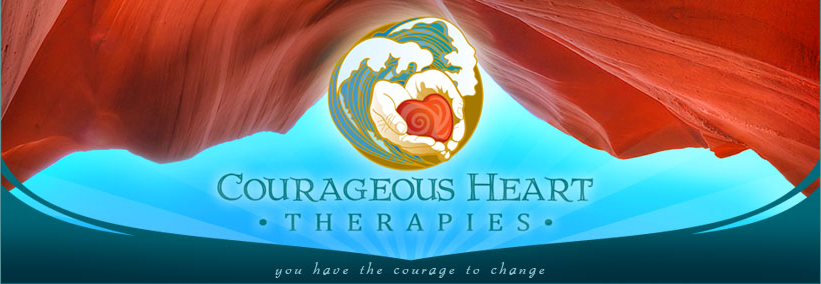Two of the primary tools I use in the pursuit of a deepening sense of aliveness and well-being within myself and others are Biodynamic Craniosacral Therapy (BCST) and Somatic Experiencing (SE). I have carried both these tools in my pocket for over twenty years. I found them because I was searching for resolution to my own debilitating trauma. I’d gotten to the point where I didn’t care anymore about what happened to cause my suffering as I did about finding a route to living with more ease and joy.
These two modalities are happily married for me, walking hand in hand and enhancing each other’s strengths. Like any good marriage, BCST and SE seek ongoing connection and autonomy. They have in common the intention and ability to effectively support the regulation of the autonomic nervous system, a system in the body that is said to be responsible for 80% of disorders. Somatic Experiencing does this by supporting people to track sensation in their bodies primarily using refined and effective verbal skills. Biodynamic Craniosacral Therapy does this by tracking fluids and making contact in a way that meets the memory being held in tissues, fluids or bones so that it can be seen and reminded of its full range of capacity. Both modalities help clients to recognize the depth and breadth of their memories and contact the places within them that have isolated themselves. SE teaches me verbal skills that BCST cannot; and BCST teaches me touch skills that SE cannot. The goal and gift of both lies in their ability to respond to what the person needs in the moment. Both support the cultivation of presence and the ability to respond to the moment more than the past. As a couple, these two rarely fight, though sometimes they step on each other’s toes and can easily take turns outshining the other. The verbal skills that an SE practitioner develops are more visible and often more immediately impactful than the softer subtler experience of BCST. The language of sensation that SE practitioners speak fluently can take years to master, as can the palpation and perceptual skills of experienced BCST practitioners.
Both also support the resolution of trauma and can reach places in the nervous system that literally freeze when something traumatic happens. Both can recognize and amplify the response that wanted to happen and can create the conditions for its completion and thus a new relationship to both the event then and to life now. Trauma has a kind of immortality. It can live on for generations unbeknownst to its descendants – and losses can reverberate through generations with equal weight, becoming the suffering of great grandchildren or the pain that gets left in the pocket of the only coat your great grandfather brought to the new world. Unresolved memories can curl in tissues, rest in bones and gather in fluids. And always within these memories is the memory of something more original, more in alignment with our innate natural capacity, more in tune with a cellular knowing of health and aliveness. We can learn to attune to this aliveness in our clients and ourselves, creating the conditions for it to amplify and facilitate healing in the present.
I have made my life work about aliveness, both a human and beyond human aliveness, the internal and immortal presence of life unfolding. The truth that life is immutable, that individuals, groups or even species can die, but life goes on and always will. Life is not about endings but the endless beginning of new possibilities. What does it mean to make relationship with the life forces that are always there? How do we approach the life force within ourselves or another? Have you ever considered that the forces that made you originally are still alive within you today? These are the questions I ask my students and myself regularly. And yet I too forgot them. I too am challenged in this fast-paced Western world to see life unfolding – not just movement but aliveness, not just breath but the Breath of Life as Osteopaths and others have been known to call the subtle rhythmic motions which are always occurring within and around us. The pace of these rhythms is immensely slow and sacred, and while not recognized or valued by the modern western world, they are ones which our bodies inherently know.
In these times, it is so important to find effective ways to turn our collective and individual wounds into tools. Now is the time to jump up with our wounds stinging and start singing anyway. Let’s write songs for the pain and poignancy of it all, ballads for the beauty of life and death. Let’s turn around and look down the paths we have traveled, culturally and individually, see the value in our attempts and find the courage and passion to keep on going. We must dig under the distractions of the modern world and the avoidance of our own pain to unearth and reclaim what is and has always been alive within us. We must dig down to the roots of our own knowing, to the wisdom that we carry within us. I faced death early and somehow survived. I know the strength of persistence of life. I know that even when we feel “stuck” that our life force is still moving within us. Whether we do change quietly or dramatically it is inevitable. Time is not only linear or sequential. It can spiral and twist into knots, in can catapult us in an instant to a moment decades ago. Our bodies don’t forget and they each know exactly what is needed. They can awaken now to ancient instinctual memory and find a way to respond to situations our ancestors could never have imagined.
My focus as a teacher is on Biodynamic Craniosacral Therapy as I teach certification trainings in this modality. But the marriage goes on. Somatic Experiencing and all its teachings and tools hold profound relevance and influence in my teaching and work. I am beginning my own process of celebrating this marriage in my own course – Neurodynamics: https://www.schoolofinnerhealth.org/courses/five-day-neurodynamics/ that I have developed and teach at the school of Inner Health. Neurodynamics is one of many steps on my path to bring the gifts I have received from this marriage into the world. If you are interested in learning these tools, come take one of our courses. We teach students how to develop embodied biodynamic skills of presence and relationship with the aim of cultivating both effective practitioners of bodywork and effective people in the world. We envision a world where all life is valued and where aliveness can flourish and where people can find and live and be who they naturally inherently are and have always been.
By Margaret Rosenau










